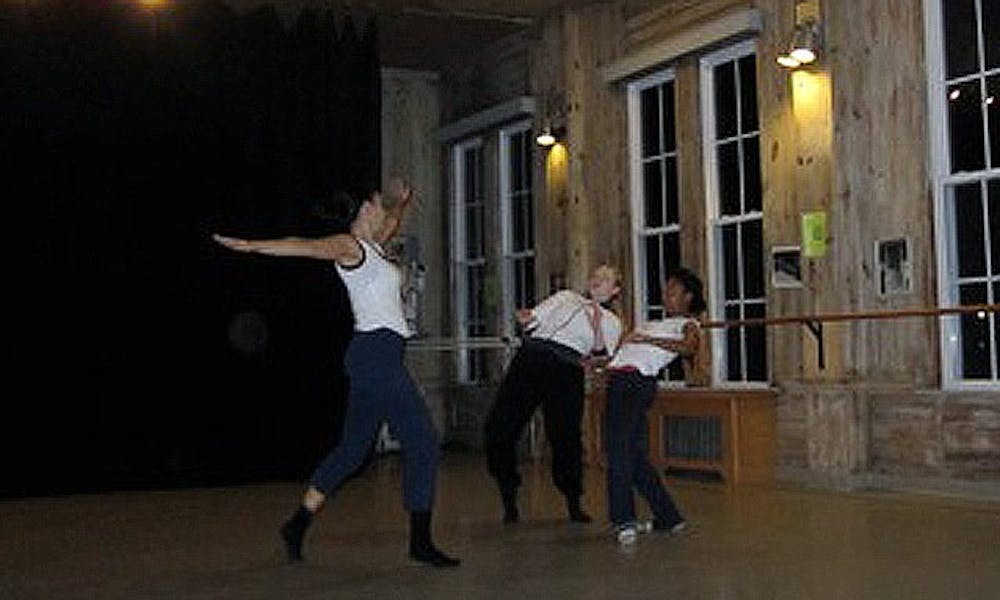When dance instructor Andrea Woods Valdes moved from New York City to Durham, and took on the role of a professor at Duke in addition to her art, she knew it would take some adjusting.
This Saturday, Woods Valdes, assistant professor of the practice of dance, will present blues wimmin, an evening of original, multidisciplinary works created in Durham. It will showcase seven video and performance pieces that Woods has developed over the past 10 years, each exploring, in some way, the wide-ranging emotional and physical facets of the blues.
“I intentionally uprooted myself from all that was familiar,” Woods Valdes said. “The new territory allowed me to redefine what I do. I was looking at an open plane.”
The program, which features junior Danika Manso-Brown as well as local Durham dancers Christiana Barnett-Murphy and Kristen Taylor, will also include live music by Josh Stohl and vocalist and cellist Shana Tucker, who composed the scores in real time as the dancers rehearsed. Woods Valdes said this sort of experimentation echoes the project as a whole, which was an exploratory process for her and for the dancers.
“I’m trying to define a paradigm that works for me, as an artist and as a professor and a scholar,” Woods Valdes said. “When working with students, it’s usually more objective. I want [blues wimmin] to be personal and subjective.”
The program’s title was inspired by political activist Angela Davis’ book Blues Legacies and Black Feminism. In the first piece of the evening, called blues wimmin: evidence of freedom, prelude to protest, Woods Valdes will present a lecture and performance that explores the evocative music and lyrics of the blues, as well its complex undertones of irony, sensuality and empowerment, through the lens of the female experience. This opening piece centers on the confluence of movement and prose. Additional works, such as the video still life w/ words, follow this same theme.
Other dances, such as Slow Jig and Mirada Ritmica/Rythmic Gaze, are more movement-based and indicative of Woods Valdes’ signature style, which incorporates modern and African dance techniques.
Barnett-Murphy, who has taken classes with Woods Valdes and participated in her repertory pieces for November Dances, discussed her experience working with Woods and with the other dancers and collaborators of blues wimmin.
“All [of the artists involved] have something to offer individually, and when you see that amount of creativity and passion being put in one project, it’s quite beautiful,” Barnett-Murphy said.
She said though working with the other artists had been a gratifying group effort, the opportunity to work with Woods Valdes herself on such a specific project has been especially insightful.
“I’ve also learned a tremendous amount from Andrea specifically,” Barnett-Murphy said. “She has a way of balancing the specific vision she has for the work, while still keeping an open mind.”
Perhaps, then, Woods Valdes’ attempts to define and preserve herself as both an instructor and an artist are falling into place quite naturally. Seamlessly connecting multimedia and movement, blues wimmin demonstrates that all it takes is the proper amount of balance.
blues wimmin will take place Feb. 12 at 7:30 p.m. in the Ark dance studio on Duke’s East Campus.
Get The Chronicle straight to your inbox
Signup for our weekly newsletter. Cancel at any time.

